
A cold is not an inflammatory, but a viral disease of the upper respiratory tract. The disease is relatively light, but without proper treatment, and even with a weakened state of the body can provoke more serious diseases. As a rule, the cold is accompanied by a temperature, but this does not always happen.
Contents
- 1 What can be the causes of
- 1 Other features of
- 3 Folk remedies
- 4 Used medications
What causes can be

The increase in temperature for a variety of diseases is a natural and correct reaction of the body aimed at suppressing a viral infection. Its mechanism is as follows.
The body temperature is determined by the center of the thermoregulation located in the hypothalamus. Special pyrogenic substances act on it. The latter are divided into 2 types: primary - bacterial exotoxins, for example, and secondary - interleukins. Secondary are responsible for the temperature increase: they provoke the production of prostaglandins, which affect the hypothalamus.
Under their action, the hypothalamus evaluates the normal body temperature as lowered and triggers the mechanisms of temperature increase. At the same time, the virus infection most often dies, as it can not withstand even insignificant heating.
However, a cold can also flow without temperature. There are several reasons for this.
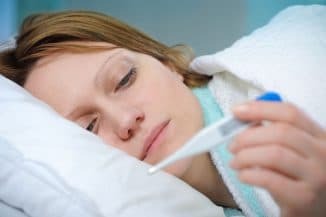
- Increased immunity to - or the presence of immunity against this pathogen. There is no need to activate protective cells by raising the temperature, this happens automatically. Symptoms of colds are usually poorly expressed, the general condition is quite satisfactory.
- Weakened immunity - against a background of a serious current disease. In this case, the protective cells are too small to activate the mechanism of temperature increase. In this case, the cold is very difficult, the symptoms are pronounced, and complications often occur.
- No response - Immune cells do not perceive the pathogen as a pathogen and do not respond to its appearance. The disease proceeds swiftly and leads to complications, since it does not meet resistance.
If, in the former case, the ailment does not cause particular concern, then the second and third require no less effective treatment than at the temperature.
Other signs of
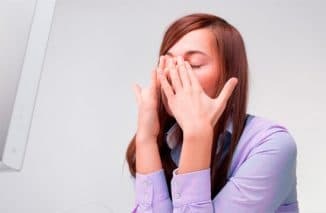
All the symptoms characteristic of colds remain:
- nasal congestion or rhinorrhea is the most "safe" symptom, which, however, causes many inconveniences, and in the absence of treatment it provokes the development of sinusitis;
- sore throat - mildly cured by ordinary rinsing of the throat and nose. However, in case of complications, the intensity increases so that it is difficult for the patient to speak and even breathe through the mouth;
- cough - in most cases is associated only with irritation of the mucosa, and therefore is expressed weakly and excretions are not accompanied. However, in case of complications, it turns into a heavy, nasal, which leads to traumas of the throat and vocal cords;
- intoxication - mandatory accompaniment of the common cold. Lethargy, weakness, fatigue is associated with the ingestion of the products of the vital activity of the virus into the blood;
- headaches, and sometimes even muscular pains of appear with a fairly severe course of the disease.
Symptoms of colds in children and adults are the same. However, in general, the ailment develops and passes in children faster.
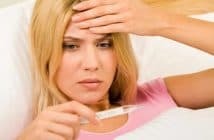 What to do when the cough after a cold does not pass, will help to understand the information from this article.
What to do when the cough after a cold does not pass, will help to understand the information from this article.
How cough is treated without a cold, and what can be the reasons for adults, is described here in the article.
And here's what to treat sores in the nose of an adult, and what tool is worth using, will help to understand this article: http: //prolor.ru/n/ lechenie-n / bolyachka-v-nosu-chem-lechit.html
And here's how to apply lemon, honey and garlic for colds, and how much this home remedy can help, is very detailed in this article.
Folk remedies
With a mild illness and good immunity, you can do without pharmacy. Traditional methods in such cases give more than a sufficient result.
The basis of any treatment for colds is a profuse warm drink:
- tea with lemon, honey and ginger is an excellent preventive and curative remedy;
- mineral alkaline water , necessarily warm. Water is often mixed with milk in a 1: 1 ratio;
- hot milk with butter and honey - half a cup of the drug is drunk at night. Children, as a rule, do not like the drink;
- decoction of thyme, coltsfoot, dog rose, lemon balm.
On video, what to drink for a cold without temperature:
Herbal tinctures strengthen the expectorant effect. Hot milk with honey makes it difficult to separate sputum. This should be taken into account when choosing a drink.
For sore throats, a variety of rinses are used:
- salt solution, soda with 2 drops of iodine tincture is a classic recipe known to everyone;
- solution of furacilin or hydrogen peroxide - 1-2 teaspoons per 200 ml of water, used for more severe pain;
- salt solution - 0.5 teaspoon per 200 ml , also gives a good result.
Inhalation is applied - a solution of soda, broths of lemon balm, sage, eucalyptus. Another popular procedure - a hot foot bath with mustard, is used with caution: with varicose veins this is excluded.
As a means of immunocorrection use a mixture of juice of 1 lemon and 100 g of honey - 2 teaspoons a day.
The listed funds are sufficient to prevent complications and ease the patient's condition. However, with severe illness or the presence of a major disease, these measures are ineffective.
Used medications
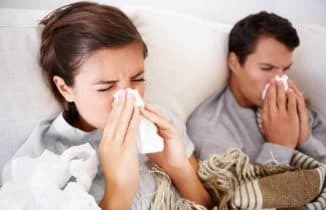
The difference between treatment of a cold and non-common cold is only in the absence of antipyretic. However, paracetamol, as a rule, is prescribed and in this case, since it acts not only as an antipyretic, but also as an anti-inflammatory agent.
Therapy includes:
- medications for symptom relief - cough, sore, nasal congestion;
- preparations to strengthen immunity, because it is their own immune system and is the main opponent of the disease;
- means for preventing complications.
Antibiotics for colds are not prescribed. These substances do not act on the causative agent of the disease.
The doctor selects drugs based on the patient's condition. In severe cold, hospitalization is possible.
If the nasal congestion is used:
- sprays and drops that have vasoconstrictive effect - xylene, otrivin( and that's what Otrivin or Nazivin for children will help to understand this article) instruction on the use of tizin( but from this article you can learn more about the instructions forthe use of drops in the nose of Tizin).
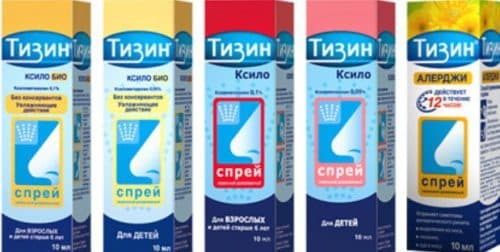
Drops for nose Tizin
You can apply drops for 5-7 days. If there is a need to continue treatment, the drug must be changed;
- wash the nose - sea, salt water, sprays, like aquamaris( how to properly wash the nose of the child Aquamaris, described in this article) of the aqualor( how correctly to apply Aqualor with nasal congestion to the child, described in this article).
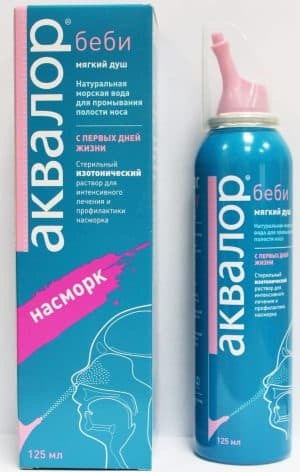
Aqualor for the nose
Flushing removes puffiness and removes mucus.
In throat and coughing, in addition to the obligatory rinsing, appoint:
- tusuprex and mukaltin in tablets - have a weak expectorant and antitussive effect;
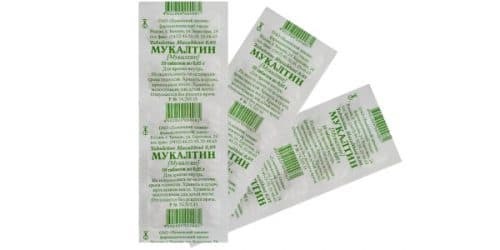
Mukaltin in tablets
- syrup of althea or pertussin - dilutes sputum and removes it. The drug is often prescribed to children, since the form of the syrup is more suitable than the tablet;But from this article you can learn more about the instructions for the use of Althea syrup from cough for children.

Althea syrup
- bromhexine, lazolvanum is prescribed for dry cough - preparations dilute sputum. Preparations for this class are not prescribed for small patients and for pregnancy.
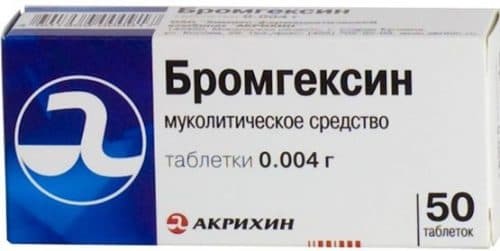
Bromhexine
For severe cough, glaucin or oxeladin is used. His task is to suppress the cough reflex. This is the case if the patient has high blood pressure.
With symptoms of intoxication are struggling with folk remedies - with the help of alkaline drink. Only in severe cases, with hospitalization, detoxification therapy is prescribed.
In addition to the course of therapy, vitamin complexes are used - from undevit to compliwit. These funds perform a supporting role.
Cold is a relatively easy disease. However, if you ignore the disease, even a cold can lead to severe consequences.
